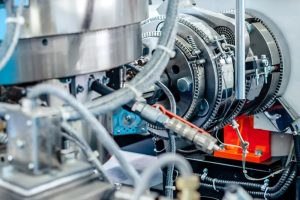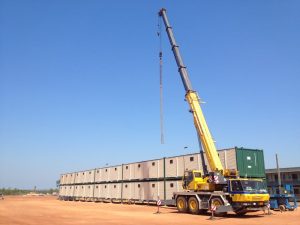
Heavy duty lifting shapes broader coordination across wider project areas and shifting structural needs. Multiple teams rely on clear movement sequencing supporting smoother site activity during long cycles. Teams maintain stronger sequencing as crane hire sunshine coast streamlines essential lifting steps across active sites. Each stage builds dependable momentum guiding crews through demanding transitions.
What Supports Broader Construction Efficiency?
Heavy duty lifting contributes steady guidance across extended working distances. Crews combine timing, communication, and precise direction to maintain predictable coordination. Each shift brings new movement requirements that influence how equipment distributes weight or reaches elevated positions.
These adjustments form the foundation for updated workflows connecting extended construction segments. Clear steps ensure teams handle essential transitions without slowing broader goals or structural timing.
Enhanced Coordination Shapes Project Flow
Projects with large operating zones depend on accurate placement decisions. Each movement influences how crews position materials while keeping every segment aligned.
Material Handling Sequences
- Coordinated lifts maintain predictable alignment
- Timed steps support progressing zones smoothly
- Clear rigging choices strengthen handling accuracy
- Balanced movement reduces onsite reposition delays
- Stable direction assists heavy transition paths
- Adjusted reach improves wide-area arrangements
Equipment Movement Cycles
- Defined signals guide heavy equipment motion
- Planned turns prevent unnecessary repositioning
- Smooth tracks help maintain orderly pathways
- Timed relocations improve section readiness
- Structured cues reduce lifting interruptions
- Updated angles support efficient machinery flow
Projects achieve better progression once crews synchronize placements with broader timelines. Each coordinated cycle strengthens the foundation for steady movement across larger areas.
Why Do Larger Sites Benefit Most?
Expansive landscapes require dependable reach across separated construction points. Every shift demands timing that links distant tasks to maintain overall progress. Precise staging decisions gain clearer direction as crane hire sunshine coast aligns consecutive movements effectively. These advantages support evenly distributed output helping teams maintain broader consistency.
Divided areas also demand equipment that manages extended paths without disrupting nearby teams. This balance increases reliability across wider zones.
Operational Planning Strengthens Overall Output
Teams focus on structured steps shaping predictable outcomes during long project phases. Controlled transitions enhance how crews handle shifts connecting multiple working points.
Load Placement Frameworks
- Defined lift zones improve clarity
- Guided weight paths reduce mistakes
- Sequenced moves balance heavy loads
- Controlled pivots support safe direction
- Aligned spacing improves transitional order
- Updated reach assists broader adjustments
Cross-Sector Coordination
- Timed signals align crew responses
- Shared guides prevent overlapping tasks
- Distant units maintain steady pacing
- Structured checks refine movement order
- Clear spacing improves team transitions
- Section cues support extended routing
Smooth planning allows large teams to work across dynamic zones without disrupting unified progress. Each controlled step strengthens structural alignment across key stages.
Can Teams Adapt Faster Onsite?
Yes, teams adjust more efficiently once they understand shifting equipment paths and coordinated handling expectations. Clear instructions guide how different units respond during active rotations across broader working zones. Adaptation becomes steadier as crews follow signals connecting their actions to larger site sequences. The result is a unified pace driven by predictable transitions shaping reliable momentum.
Extended Reach Enables Steadier Progress
Expanded lifting capacity helps crews manage wide sections without slowing connected movement cycles. Each stage supports refined placement ensuring different zones stay aligned throughout demanding phases. Larger distances become easier to navigate once equipment maintains consistent direction across extended surfaces. These advantages encourage more confident planning resulting in smoother flow that supports long-term project stability.






